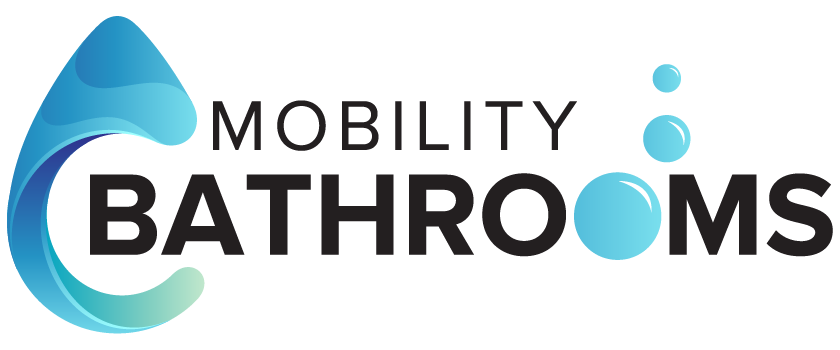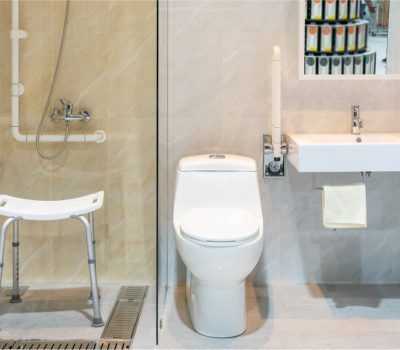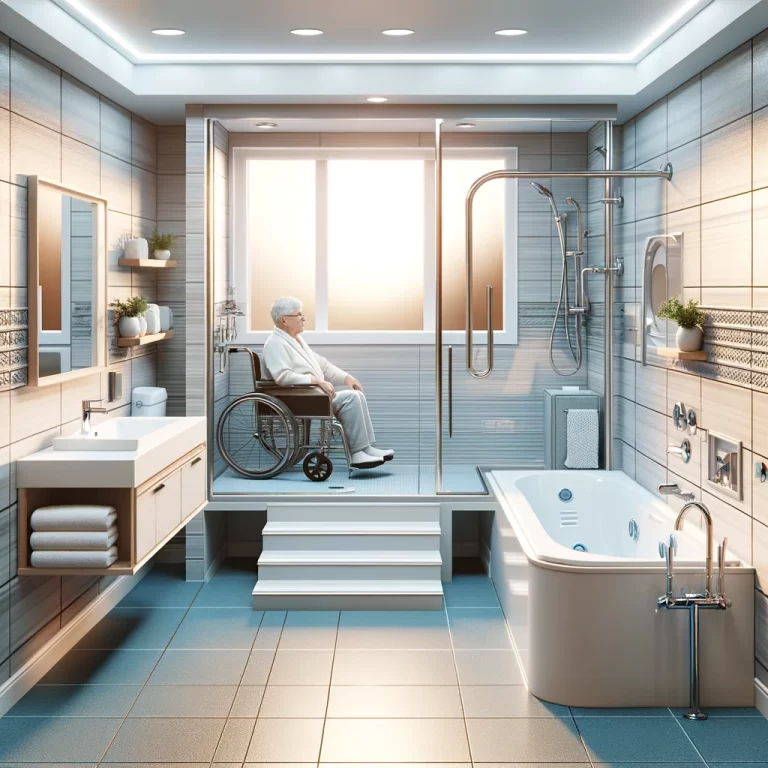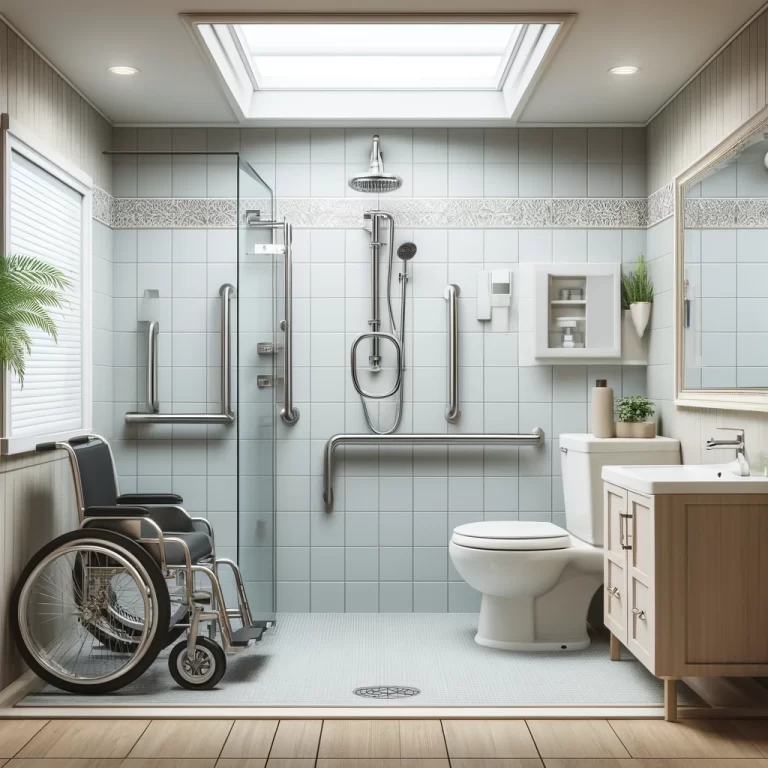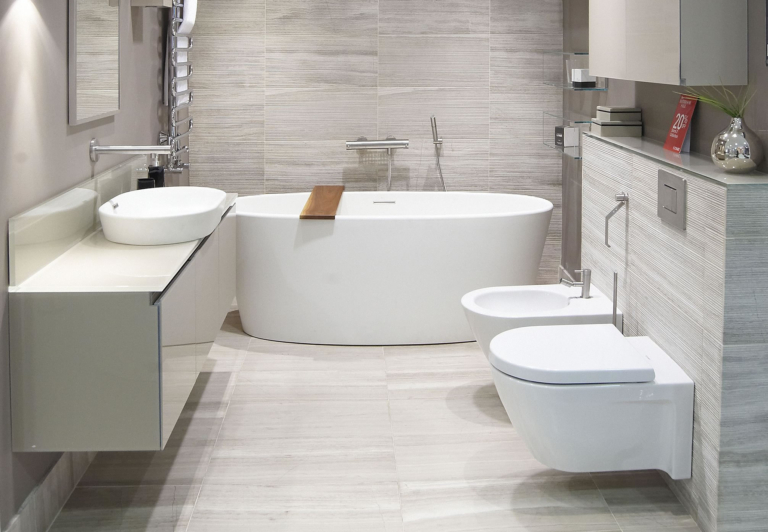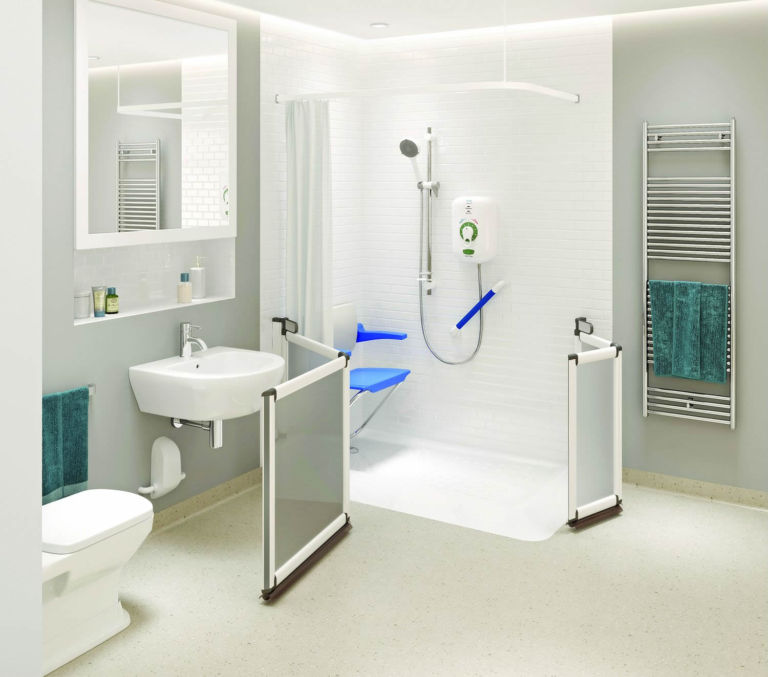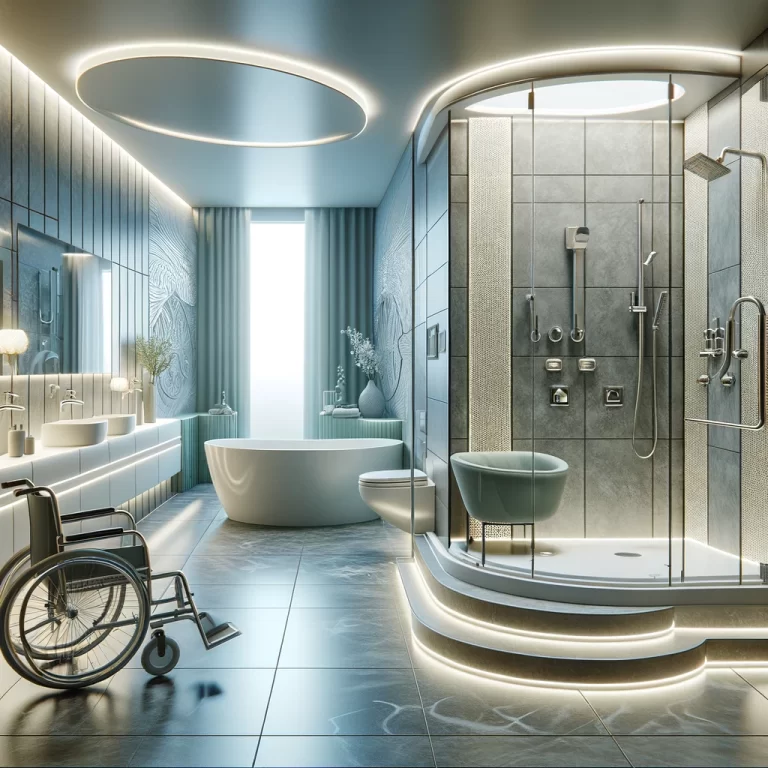Is an accessible toilet the same as a handicap toilet
Are you confused about the terminology surrounding accessible toilets and handicap toilets?
We clarify the differences between the two and explore the features of each. We also discuss the legal requirements for accessible toilets and debunk common misconceptions.
Delve into the importance of having accessible toilets in promoting inclusivity and equality. Learn how businesses and public places can ensure accessibility through proper toilet design by continuing to read!
Understanding the Terminology
Understanding the terminology related to toilets and disabilities is crucial for ensuring compliance with ADA regulations and design standards.
When referring to toilets designed to accommodate individuals with disabilities, they are often known as accessible toilets or handicap toilets. In the UK, regulations such as the Equality Act 2010 outline specific requirements for these facilities to ensure inclusivity. Such toilets are equipped with features like grab bars, raised seats, and larger spaces to allow manoeuvrability for wheelchair users.
The Americans with Disabilities Act (ADA) in the US mandates that public facilities provide accessible restroom facilities meeting certain standards. These regulations are in place to promote equality and ensure that individuals with disabilities have the same level of accessibility and comfort as others.

What is an Accessible Toilet?
An accessible toilet is a specially designed facility that caters to individuals with disabilities, ensuring they have the necessary features and space for comfortable use.
These toilets are specifically crafted with wheelchair users in mind, offering wider entrances and spacious interiors to allow easy maneuvering.
Design elements such as grab bars strategically placed for support and stability, raised toilet seats for easier transfers, and emergency pull cords for assistance are standard requirements in accessible toilets to comply with regulations like the ADA in the United Kingdom and UK standards.
What are the Features of an Accessible Toilet?
Accessible toilets incorporate various features to accommodate individuals with disabilities, including grab rails, adjustable height controls, and ample space for carers and support equipment.
Grab rails in accessible toilets are strategically placed to provide stability and aid in movement for users with disabilities. These rails are reinforced and designed to support different weight capacities, ensuring safety and confidence while using the facilities. Support mechanisms like adjustable height controls allow for customisation based on individual needs, enhancing comfort and ease of use. The inclusion of changing tables in some accessible toilets further caters to users with mobility challenges or carers requiring assistance. Such modifications aim to create an inclusive and safe environment for all individuals, emphasizing the importance of inclusive design and thoughtful accommodations.
What is a Handicap Toilet?
A disabled toilet is designed with specific adaptations such as raised bowl heights and accessible controls to facilitate ease of use for individuals with disabilities.
One of the key features of a disabled toilet is the adjustable bowl height, which can be customised to meet the needs of different users. This ensures that individuals with varying levels of mobility can comfortably use the toilet without straining themselves. The control mechanisms of a disabled toilet are carefully designed to be easily reachable and operable, allowing users with disabilities to independently use the facilities without assistance.
The design elements of a disabled toilet often include grab rails for support, non-slip flooring for added safety, and spacious layouts to accommodate mobility aids such as wheelchairs. These specialised features make disabled toilets essential in providing inclusive and barrier-free facilities for all individuals.
What are the Features of a Handicap Toilet?
Disabled toilets feature specific design elements like increased space, accessible controls, and raised bowl heights to enhance usability and comfort for individuals with disabilities.
One crucial aspect that sets disabled toilets apart is the ample space they provide, accommodating mobility aids and allowing for easier manoeuvring. This spacious design ensures that individuals with disabilities can navigate the area with freedom and without feeling cramped.
The accessible controls in disabled toilets are strategically placed at a convenient height and easy to operate, promoting independence and improving the overall user experience.
The raised bowl height in these toilets is a key feature that aids in promoting proper posture and making sitting down and standing up more comfortable for individuals with varying needs. This adjustment ensures that users can maintain a safe and stable position during their visit, minimising the risk of strain or discomfort.
Altogether, by prioritising elements like spaciousness, accessible controls, and height adjustments, disabled toilets strive to provide a user-friendly environment that caters to the diverse requirements of individuals with disabilities.
Is There a Difference Between an Accessible Toilet and a Handicap Toilet?
Whilst both accessible and disabled toilets cater to individuals with disabilities, there are nuanced differences in their design, features, and compliance with ADA regulations.
Accessible toilets are specifically designed to accommodate individuals with physical disabilities, ensuring they have adequate space to manoeuvre comfortably.
On the other hand, disabled toilets are equipped with features like grab rails, raised toilet seats, and emergency pull cords, prioritising safety and ease of use for those with mobility impairments.
The Americans with Disabilities Act (ADA) mandates specific guidelines for both types of facilities, requiring certain dimensions, layouts, and signage to ensure accessibility standards are met.
What are the Legal Requirements for Accessible Toilets?
The legal requirements for accessible toilets encompass compliance with regulations such as the ADA in the United States and the Equality Act in the UK, ensuring that public facilities adhere to specific design standards for inclusivity.
Under the Americans with Disabilities Act (ADA), public buildings in the US must provide accessible facilities, including toilets, for individuals with disabilities. This means adhering to strict guidelines on dimensions, grab bar placements, signage, and other features to ensure easy use for all. Failure to comply with these regulations can result in legal repercussions and fines.
In the UK, the Equality Act sets out similar requirements for accessible toilets in public venues. These standards are designed to promote equality and prevent discrimination against individuals with disabilities. It enforces specific design specifications and accessibility standards to create a barrier-free environment for all.
What are the Common Misconceptions about Accessible Toilets?
Common misconceptions about accessible toilets include misunderstandings about the need for specific accommodations, the role of organisations in implementing adjustments, and the varied requirements of users with disabilities.
One common fallacy is that accessible toilets are only required for individuals in wheelchairs, overlooking the diverse range of disabilities that may necessitate such facilities. There is a misconception that making adjustments for accessibility is solely the responsibility of government entities, neglecting the vital role that private organisations play in ensuring inclusivity. Another myth is the assumption that all users with disabilities have the same requirements, when in reality, the needs can vary greatly depending on the individual’s condition and mobility.
Why is it Important to Have Accessible Toilets?
Accessible toilets play a crucial role in promoting inclusivity and equality by providing individuals with disabilities the necessary accommodations and facilities to access public spaces comfortably.
These facilities are designed to meet the specific needs of people with disabilities, ensuring that they can navigate public areas without limitations. Accessible toilets not only enhance the physical accessibility of a place but also contribute to the social and psychological well-being of individuals with diverse needs.
By incorporating features such as grab bars, wider doorways, and lower sinks, accessible toilets create a more inclusive environment that enables everyone to participate fully in various activities. They represent a significant step towards breaking down barriers and fostering a society where all individuals are valued and included, regardless of their abilities.
How Does it Benefit People with Disabilities?
Accessible toilets benefit people with disabilities by providing essential accommodations, support mechanisms, and caregiver-friendly features that enhance their comfort and independence in public spaces.
One of the key advantages of accessible toilets is the provision of specialised accommodations that cater to a range of needs, such as grab rails, raised toilet seats, and spacious layouts to ensure manoeuvrability for wheelchair users.
These facilities also play a crucial role in ensuring caregiver support by incorporating features like emergency pull cords, accessible basins, and adequate space for manoeuvring mobility aids, which not only assist individuals with disabilities but also provide peace of mind to their caregivers.
How Does it Promote Inclusivity and Equality?
Accessible toilets promote inclusivity and equality by removing barriers to accessibility, fostering a more inclusive society, and aligning with legislation that mandates equal rights and accommodations for individuals with disabilities.
By providing accessible toilets in various public spaces, society acknowledges the diverse needs of its members and works towards creating a more inclusive environment for everyone. Not only do these facilities cater to physical accessibility requirements, but they also play a significant role in shaping societal attitudes towards disability. Their presence signals a commitment to equal treatment and accommodation for individuals with disabilities, reinforcing the notion that everyone deserves dignity and respect.
How Can Businesses and Public Places Ensure Accessible Toilets?
Businesses and public places can ensure accessible toilets by following specific guidelines for design, compliance with regulations, and incorporating essential accommodations tailored to meet the needs of individuals with disabilities.
One crucial aspect of designing an accessible toilet is ensuring that there is ample space for manoeuvrability, particularly for individuals using mobility aids such as wheelchairs. The layout should allow for easy navigation and access to all amenities, with grab bars strategically placed for support. It’s essential to include accessible signage that uses clear symbols and contrasting colours to aid those with visual impairments. Businesses should consider installing raised toilet seats and accessible sinks to cater to a diverse range of needs.
What are the Guidelines for Designing Accessible Toilets?
The guidelines for designing accessible toilets emphasise the importance of ample space, floor layout considerations, and adherence to universal design principles to ensure maximum accessibility and usability for all individuals.
Regarding spatial requirements, it’s crucial to allocate enough room within the restroom for manoeuvrability, especially for individuals using mobility aids like wheelchairs. The layout should prioritise clear pathways and allow for easy navigation between different fixtures such as the toilet, sink, and grab bars.
In terms of floor space configurations, implementing features like non-slip flooring and level surfaces can greatly enhance safety and ease of movement for everyone, including those with mobility challenges. Additionally, universal design principles advocate for creating facilities that cater to diverse needs without the need for specialised adaptations, promoting inclusivity and independence for all users.
What are Some Examples of Accessible Toilets?
Examples of accessible toilets include those equipped with features like grab rails, clear signage, accessible facilities, and specialised amenities such as changing tables for enhanced user convenience.
Regarding grab rails, they are often strategically placed near the toilet and in the shower area to assist individuals with mobility challenges. Clear signage not only includes standard wheelchair symbols but also tactile symbols for visually impaired individuals. Accessible facilities may involve wider doors, lower sinks, and toilets with adjustable heights for different needs. Specialised amenities like changing tables cater to families with young children or individuals requiring extra support. These elements collectively contribute to creating a welcoming and inclusive toilet environment.
Conclusion
In conclusion, the evolution of accessible toilets reflects a positive trend towards greater inclusivity and accessibility, with continued advancements in design standards and user-friendly features.
One of the key trends driving the enhancement of accessible toilets is the focus on user-centric design features. These features prioritise the needs and comfort of users with diverse mobility requirements, ensuring that the restroom facilities cater to a wider range of individuals.
Ongoing recommendations emphasise the importance of incorporating universal design principles, such as adequate space for manoeuvrability, grab bars for support, and non-slip flooring, in accessible restroom facilities.
Frequently Asked Questions
Is an accessible toilet the same as a handicap toilet?
No, an accessible toilet and a handicap toilet are not the same. While they both refer to toilets designed for individuals with disabilities, there are some key differences between the two.
What is an accessible toilet?
An accessible toilet, also known as an ADA-compliant toilet, is a restroom facility that meets the requirements outlined in the Americans with Disabilities Act (ADA). These requirements ensure that individuals with disabilities have equal access to use the restroom.
What is a handicap toilet?
A handicap toilet, also known as a handicapped-accessible toilet, is a toilet that is specifically designed for individuals with physical disabilities. These toilets often have features such as grab bars and raised seats to make it easier for individuals with disabilities to use the restroom.
What are the key differences between an accessible toilet and a handicap toilet?
The main difference between an accessible toilet and a handicap toilet is the level of compliance with ADA requirements. While all handicap toilets are ADA-compliant, not all accessible toilets are specifically designed for individuals with disabilities. Additionally, handicap toilets may have additional features such as grab bars, while accessible toilets may simply meet the minimum requirements for accessibility.
Can an accessible toilet also be a handicap toilet?
Yes, it is possible for an accessible toilet to also be a handicap toilet. If a restroom facility meets all the ADA accessibility requirements and also includes features such as grab bars and raised seats, then it can be considered both an accessible and a handicap toilet.
Are there specific regulations for accessible and handicap toilets?
Yes, there are specific regulations outlined in the ADA Accessibility Guidelines for Buildings and Facilities that specify the requirements for accessible and handicap toilets. These regulations are in place to ensure that all individuals, regardless of their physical abilities, have equal access to restrooms.
